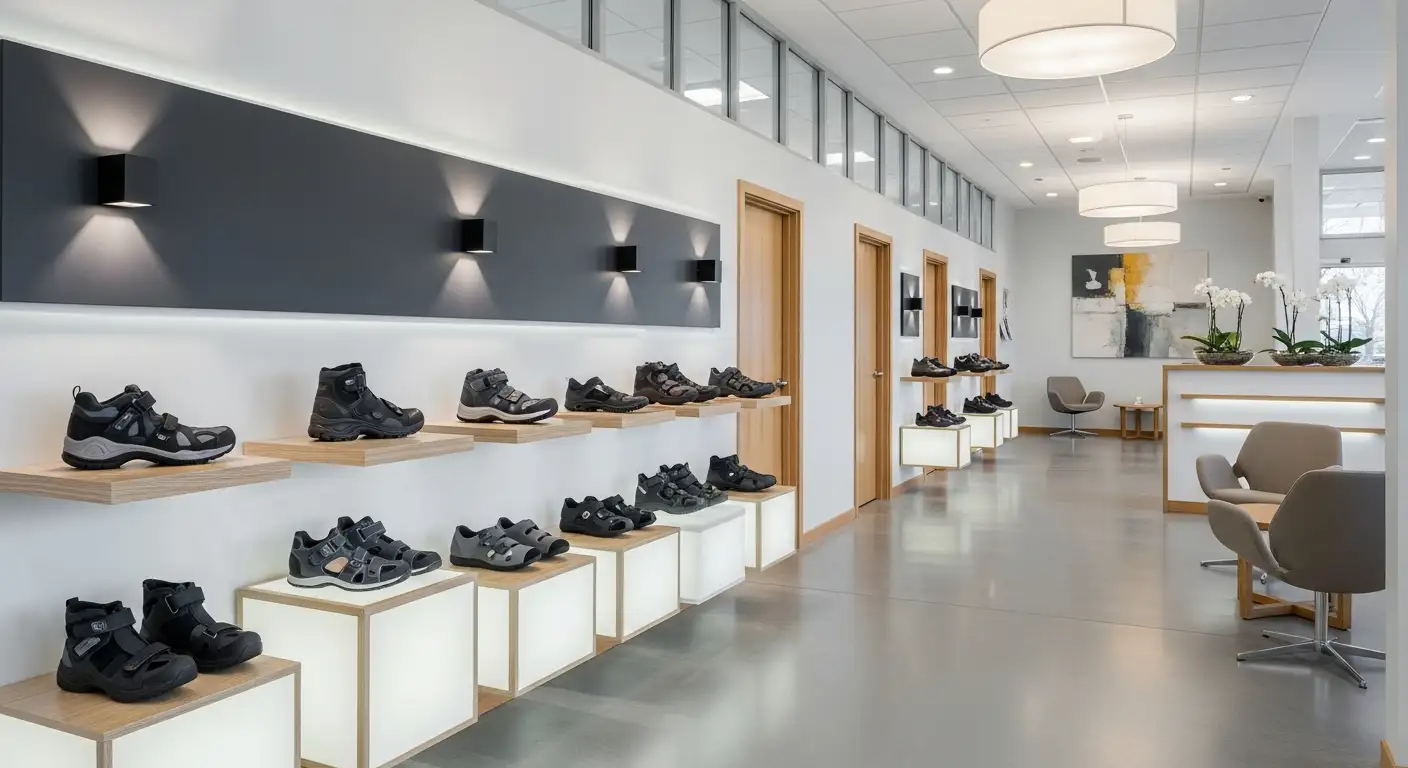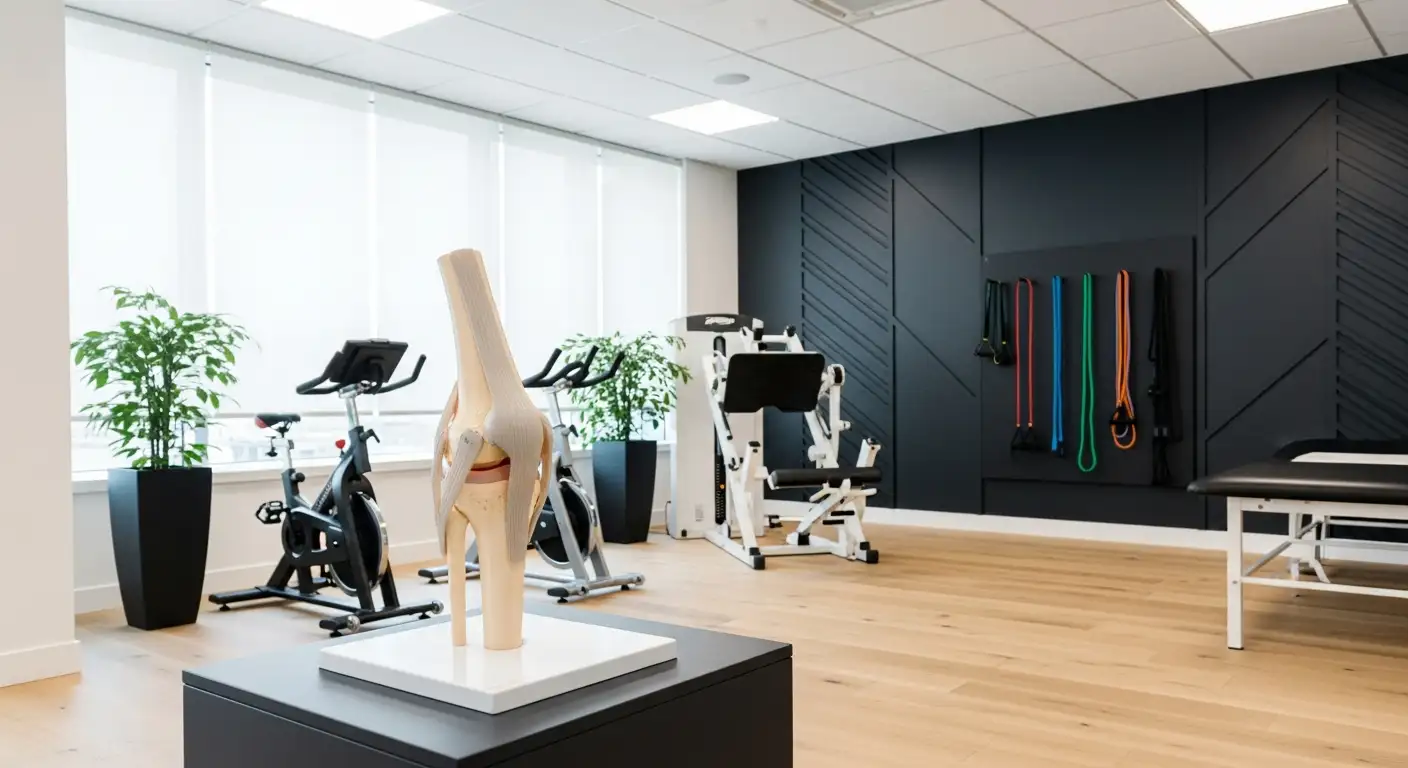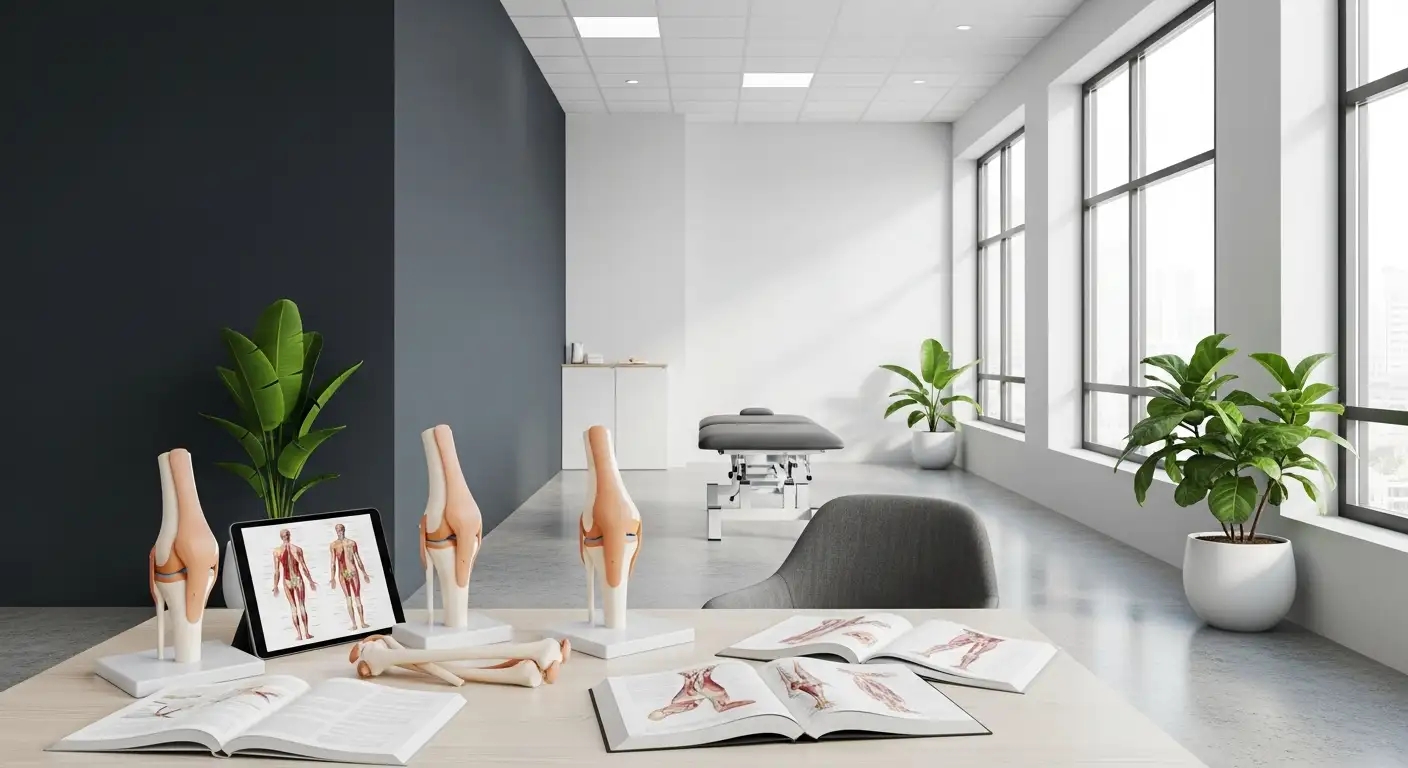Understanding Knee Pain
Knee pain is a common complaint that can affect people of all ages. It can be the result of an injury, such as a ruptured ligament or torn cartilage, or it can be due to certain medical conditions – arthritis, gout, and infections. Many types of minor knee pain respond well to self-care measures. However, some types of knee pain may require surgical treatment. In this section, we'll delve into the common causes of knee pain and the symptoms that often accompany it.

Common Causes of Knee Pain
Knee pain when bending back can be caused by various conditions. Often, it's a case of overuse, injury, or muscle imbalances that lead to issues such as patellofemoral pain syndrome, which is particularly common in women and young adults, or chondromalacia patella. Both of these conditions can cause problems in the alignment and movement of the patella (kneecap) [1].
Other possible causes include IT band syndrome, meniscus tears, runner's knee, knee bursitis, patellar tendinitis, and osteoarthritis, among others.
Symptoms Accompanying Knee Pain
When experiencing knee pain when bending back, there may be additional symptoms. These can include pain under or around the kneecap when bending the knee, squatting, jumping, or using the stairs. Other symptoms can include stiffness and swelling, a popping or crunching noise, inability to fully straighten the knee, and weakness or instability.
Understanding the root cause of your knee pain is crucial for effective treatment. If you're experiencing persistent or severe knee pain, it's important to seek medical attention. A healthcare professional can provide a proper diagnosis and recommend treatment options based on your specific condition.
Examining Knee Pain When Bending
Understanding knee pain when bending back involves identifying the specific conditions that could cause such discomfort and recognizing activities that could exacerbate the issue.
Conditions Causing Pain When Bending
Knee pain when bending back can be caused by various conditions. Some of the common ones include patellofemoral pain syndrome, IT band syndrome, or meniscus tears.
Patellofemoral pain syndrome is a common cause of knee pain when bending back, especially in women and young adults. This condition is characterized by pain at the front of the knee and around the kneecap. It often happens when the kneecap is misaligned and rubs against the lower part of the thigh bone instead of gliding smoothly over it.
Another condition that may cause knee pain when bending back is chondromalacia patella. This ailment is characterized by a breakdown of the cartilage under the kneecap which leads to pain and inflammation. It can cause problems in the alignment and movement of the patella (kneecap).
Activities Aggravating Knee Pain
Certain activities may exacerbate knee pain when bending back. These include repetitive or high-impact activities that put stress on the knee joint. Examples of such activities include squatting, running, and climbing stairs [1].
Importantly, factors that may increase the risk of developing knee pain when bending back include obesity, overuse, injury, and misalignment of the knee joints.
Understanding the conditions causing knee pain when bending and the activities that aggravate it can help individuals manage their pain effectively. It's essential to consult a healthcare professional for accurate diagnosis and treatment.
Risks and Prevention
Understanding the factors that can increase the risk of experiencing knee pain when bending back and ways to prevent it is crucial. This knowledge can help individuals maintain knee health and mobility, and potentially avoid conditions causing such discomfort.
Factors Increasing the Risk
Several factors can heighten the risk of developing knee pain when bending back. These include:
- Obesity: Excess weight puts additional pressure on the knee joints, making them prone to wear and tear, which can result in pain when bending.
- Overuse: Engaging in repetitive activities or exercises that put stress on the knee joint can lead to inflammation and pain.
- Injury: Trauma to the knee, such as sprains, strains, or fractures, can cause pain when bending.
- Misalignment of the Knee Joints: If the knee joints are not correctly aligned, it can lead to abnormal knee function, causing pain when bending back.
Reference: Medical News Today
Preventive Measures for Knee Pain
Preventing knee pain when bending back involves a combination of health practices and safety measures.
- Maintain a Healthy Weight: Keeping a healthy weight reduces the pressure on the knee joints, reducing the risk of pain when bending.
- Wear Supportive Footwear: Proper footwear can provide the necessary support and cushioning to the knees, minimizing the risk of injuries and discomfort.
- Use Proper Techniques during Physical Activities: Using correct form when exercising or engaging in physical activities can help prevent undue stress on the knees.
- Avoid Activities that Worsen Knee Pain: If certain activities cause knee pain, it's best to avoid them or modify the movement to prevent further discomfort.
- Use Supportive Knee Braces: Wearing knee braces can provide additional support and stability to the knee joint, aiding in pain prevention.
- Maintain Proper Bending Form: Keeping the back straight while bending, avoiding twisting or turning when lifting heavy objects, and ensuring the knees are in line with the feet can help minimize stress on the knee joints.
The preventive strategies mentioned above can help safeguard the knees from potential injuries and pain. However, it's essential for individuals with persisting knee pain when bending back to consult a healthcare professional for an accurate diagnosis and appropriate treatment plan [3].
References: Healthline, SG Pain Solutions, Guthrie
Diagnosis and Treatment
Addressing knee pain when bending back effectively requires an accurate diagnosis and an appropriate treatment strategy.
Importance of Professional Diagnosis
A professional diagnosis is crucial in understanding the root cause of knee pain when bending back. It allows healthcare professionals to identify the specific conditions causing the pain and determine the most effective treatment options. A medical professional may use a combination of physical examinations, patient history, and diagnostic tests to identify the underlying condition causing the discomfort.
Treatment Options and Strategies
Once a diagnosis has been made, various treatment options may be considered. The choice of treatment depends on the severity of the pain, the underlying cause, and the individual's overall health. Treatment for knee pain when bending back may include physical therapy, rest, ice, compression, elevation, and over-the-counter pain relievers. In severe cases, more advanced treatments such as injections or surgery may be necessary to address the underlying issue.
Physical therapy and exercise are effective ways to manage and relieve knee pain. These methods work by strengthening the muscles surrounding the knee joint, improving flexibility, and correcting posture issues.
In some situations, treatment options can range from physiotherapy and pain management techniques to surgical interventions like knee replacement, tailored based on the specific underlying cause of the pain and the individual's unique health circumstances [5].
It's essential for individuals experiencing knee pain when bending back to consult with healthcare professionals to accurately diagnose and treat the condition. This ensures the most effective treatment strategy is implemented, leading to improved outcomes and quality of life.
Role of Physical Therapy
Physical therapy plays a crucial role in managing and potentially alleviating knee pain when bending back. It revolves around strengthening exercises for the knee and the benefits that come with this therapeutic approach.
Strengthening Exercises for the Knee
Strengthening the muscles that support the knee is a key preventive measure against injuries and is pivotal in improving knee stability. Incorporating exercises like squats and lunges into a regular routine can enhance muscular strength, reduce pressure on the knees during bending, and enhance overall stability.
Further exercises that can improve knee flexibility, range of motion, and stability include stretching, hip extensions, knee circles, side leg lifts, and strength training. Regularly incorporating these exercises into your routine can bring significant benefits for knee health.
Benefits of Physical Therapy
Physical therapy, along with targeted exercises, is an effective approach to managing and alleviating knee pain when bending back. They work by strengthening the muscles surrounding the knee joint, improving flexibility, and addressing posture issues [4].
Physical therapy aims to improve joint function and reduce discomfort, and is often recommended as part of the treatment plan for knee pain when bending back. It presents a non-invasive and effective alternative to surgical interventions, particularly when the knee pain is due to muscular imbalances or weakness.
Overall, physical therapy and strengthening exercises offer a proactive approach to managing knee pain. They not only provide relief from pain but also empower individuals to take control of their health and improve their quality of life. Whether you are experiencing knee pain or looking to prevent it, consider incorporating these exercises into your routine. However, it is advisable to consult with a healthcare professional before starting any new exercise regimen to ensure safety and effectiveness.
When to Seek Medical Help
Properly addressing knee pain when bending back is crucial for maintaining overall health and mobility. It's essential to recognize the severity of symptoms and understand the importance of early intervention.
Recognizing Severity of Symptoms
Knee pain when bending back can be a sign of a more severe issue that should be addressed promptly to prevent further complications. Experiencing persistent, severe pain, or pain that interferes with daily activities are all indications that medical evaluation is necessary.
Symptoms such as swelling, redness, inability to bear weight on the knee, or visible deformity around the joint, are signs of potentially serious conditions. If these symptoms are present, immediate medical attention is recommended.
Importance of Early Intervention
Seeking early medical intervention when experiencing knee pain when bending back can help identify the underlying cause and prevent the condition from worsening. Early diagnosis can lead to more effective treatment, preventing further damage and improving the overall quality of life [4].
In some cases, knee pain when bending back may require more advanced treatments such as injections or surgery to address the underlying issue. A healthcare provider can diagnose the cause and recommend appropriate treatment options [3].
The key takeaway is not to ignore knee pain when bending back. Recognize the severity of symptoms and seek medical help promptly for an accurate diagnosis and personalized treatment. Early medical intervention is crucial to prevent the condition from worsening and to maintain mobility and quality of life.
References
[1]: https://www.medicalnewstoday.com/articles/311280
[2]: https://www.mayoclinic.org/diseases-conditions/knee-pain/symptoms-causes/syc-20350849
[3]: https://www.healthline.com/health/knee-pain-when-bending
[4]: https://www.sgpainsolutions.com/general-health-tips/knee-pain-relief/
[5]: https://www.spirehealthcare.com/health-hub/specialties/bones-and-joints/knee-pain-when-bending-or-squatting/
[6]: https://www.guthrie.org/blog/knee-pain-when-bending-heres-what-you-can-do-about-it
[7]: https://www.mayoclinic.org/symptoms/knee-pain/basics/when-to-see-doctor/sym-20050688




